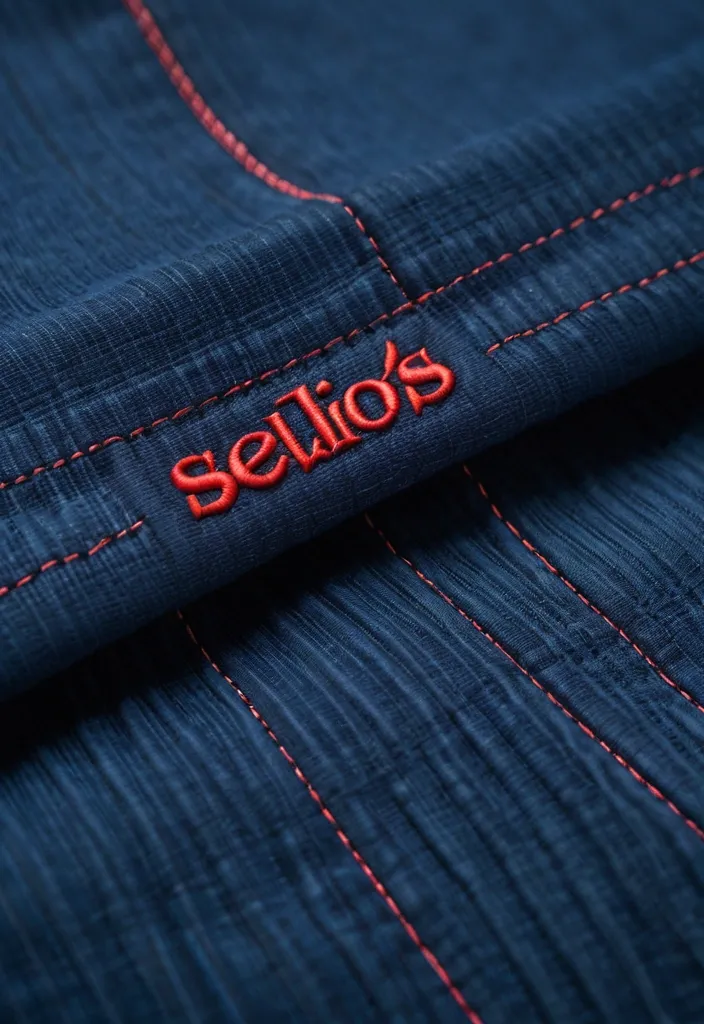Search Results for mate
Explore AI generated designs, images, art and prompts by top community artists and designers.

A young woman with slim gymnastics body , her dark hair in a ponytail as sits casually on a kitchen bar stool , illuminated by soft natural light streaming through a large window. She wears a heather gray halter top and black yoga shorts , her legs are crossed one over the other with her feet adorned in striped fuzzy socks dangling over the side. She sits at a kitchen countertop eating breakfast and reading a large book. Her gaze is directed at the viewer as she stirs a white bowl of cereal with a spoon , suggesting she's eating cereal sitting at the counter. She smiles warmly at the viewer. Above the window , several pots and colanders hang from hooks , and a shelf to the left holds small potted plants and various kitchen items. The scene conveys a relaxed , intimate atmosphere in what appears to be a cozy kitchen setting. ,

A young woman with slim gymnastics body , her dark hair in a ponytail as sits casually on a kitchen bar stool , illuminated by soft natural light streaming through a large window. She wears a heather gray halter top and black yoga shorts , her legs are crossed one over the other with her feet adorned in striped fuzzy socks dangling over the side. She sits at a kitchen countertop eating breakfast and reading a large book. Her gaze is directed at the viewer as she stirs a white bowl of cereal with a spoon , suggesting she's eating cereal sitting at the counter. She smiles warmly at the viewer. Above the window , several pots and colanders hang from hooks , and a shelf to the left holds small potted plants and various kitchen items. The scene conveys a relaxed , intimate atmosphere in what appears to be a cozy kitchen setting. ,

A young woman with slim gymnastics body , her dark hair in a ponytail as sits casually on a kitchen bar stool , illuminated by soft natural light streaming through a large window. She wears a heather gray halter top and black yoga shorts , her legs are crossed one over the other with her feet adorned in striped fuzzy socks dangling over the side. She sits at a kitchen countertop eating breakfast and reading a large book. Her gaze is directed at the viewer as she stirs a white bowl of cereal with a spoon , suggesting she's eating cereal sitting at the counter. She smiles warmly at the viewer. Above the window , several pots and colanders hang from hooks , and a shelf to the left holds small potted plants and various kitchen items. The scene conveys a relaxed , intimate atmosphere in what appears to be a cozy kitchen setting. ,

Full-body character design shot of a 35-year-old Scandinavian male rescuer standing on neutral gray ground. Tired , weathered face with a short beard and compassionate eyes , posture upright but subtly exhausted. He wears a dirty olive-green hooded parka , dark gray cargo pants , and mud-stained hiking boots , with both hands clearly visible at his sides. Hyper-realistic texture detail on fabric , dirt , and worn materials , realistic skin with subtle imperfections. High-contrast lighting with soft shadows , cinematic 8K resolution , fine film-grain texture , clean studio-style background , vertical 9:16 character sheet framing. ,

a cinematic movie poster of the silhouette of Lord Krishna , described as playing Flute , standing in front of a black background. the image features a double exposure with The Dwarkadhish temple , temple is known as DWARKADHISH Temple. According to the opinion of the Department of Archaeology , This temple is 1200 years old. Logically estimated one great-grandson of Lord Sri Krishna Vajranabhe Earlier , around 1400 BCE samudrama dubhi surviving remnant of the house of umbrellas established , with dark tones and muted colors , cinematic , epic. ,

Epic fantasy scene featuring a powerful female figure levitating in mid-air. Her body is upright , arms extended horizontally in a T-pose , legs together , as if suspended by magical energy. She has a voluptuous , strong feminine figure , well-proportioned and heroic.Her long dark hair flows freely around her , moved by an unseen wind. She wears fantasy-style garments or armor adapted to her form , elegant and otherworldly , made of mystical fabrics or enchanted materials.Behind her unfolds a vast fantasy world: floating islands , distant mountains , ancient ruins , and a dramatic sky filled with clouds and glowing light. Magical energy radiates subtly around her body.Cinematic lighting , high fantasy atmosphere , ultra-detailed , dynamic clouds , epic scale , powerful and divine presence , 8K quality. ,

A cinematic promo photo showcasing premium online accounts for sale. Dark modern tech background with glowing digital network lines. Social media and email platform icons (Instagram , Facebook , Twitter X , Snapchat , TikTok , YouTube , Gmail , GitHub , TextPlus , TextNow , Google Voice , Yahoo , Outlook) smoothly animate onto the screen one by one , floating and glowing. Subtle neon blue and purple lighting , professional business vibe , smooth camera motion , high-end digital marketplace style , no people , no text , ultra-HD. ,

Epic fantasy scene featuring a powerful female figure levitating in mid-air. Her body is upright , arms extended horizontally in a T-pose , legs together , as if suspended by magical energy. She has a voluptuous , strong feminine figure , well-proportioned and heroic. Her long dark hair flows freely around her , moved by an unseen wind. She wears fantasy-style garments or armor adapted to her form , elegant and otherworldly , made of mystical fabrics or enchanted materials. Behind her unfolds a vast fantasy world: floating islands , distant mountains , ancient ruins , and a dramatic sky filled with clouds and glowing light. Magical energy radiates subtly around her body. Cinematic lighting , high fantasy atmosphere , ultra-detailed , dynamic clouds , epic scale , powerful and divine presence , 8K quality. ,


Contexto: Nível de realismo de fotos em IA- Generate a mirror photo of a very muscular , amateur ukrainian female bodybuilder in her 26s , in a relaxed front single biceps pose , after a workout , wearing a classic red competition bikini , under soft gym lighting. Realistic skin details on arms , legs , and groin — natural 4-5 day hair growth texture with short , dark hairs only in the groin , hairless legs , raw , unretouched skin , she's a little bloated , but she has a lot of muscle mass , large volumous quadriceps and small stretch marks , legs apart , good artificial lighting. Photo taken with an iPhone , photorealistic , unedited ,

Landing Page Hero Section Reimagined: Create a modern , immersive hero section featuring a dynamic holographic gradient background that subtly shifts between deep purple (#6B46C1) to electric blue (#3B82F6) to cyan (#06B6D4) , creating a futuristic AI-inspired atmosphere. The gradient should have a gentle animated flow (3-5 second loop) suggesting data streams or neural networks. Visual Elements & Depth: Add floating geometric shapes (translucent hexagons , nodes , and connection lines) that subtly parallax scroll , suggesting AI neural networks and automated systems Integrate a glassmorphism card overlaying the gradient for your main content area , with frosted glass effect (backdrop-filter: blur(12px) , white/10% opacity) to create sophisticated depth Replace the static photo with an AI-enhanced portrait that has subtle edge glow in accent colors (cyan/purple) and animated particle effects around the edges , suggesting tech proficiency Typography & Content: Use fluid , variable typography for the headline with a gradient text effect (purple to cyan) that responds to cursor proximity with subtle scale animations Add a pricing transparency badge in the top right ("Competitive Rates - Premium Quality") with a subtle pulse animation in your accent color Include micro-animations on hover for navigation items—subtle underline draws with gradient effect Color Palette: Primary gradient: Deep Purple (#6B46C1) → Electric Blue (#3B82F6) → Cyan (#06B6D4) Accent: Warm Orange (#F97316) for CTAs to create powerful contrast and confidence Background: Rich dark (#0A0A0F) with subtle noise texture for depth Text: White (#FFFFFF) with reduced opacity variations for hierarchy Interactive Elements: Transform "Hire me" button into a premium CTA with orange gradient background , white text , and animated hover state (expands slightly , adds glow effect) Add scroll-triggered animations revealing a "Tech Stack" section with floating tech icons (TypeScript , React , Node.js , AI tools) that fade in with stagger effect Include a "Built with AI Assistance" badge with robot icon and subtle animation to showcase your AI-forward approach Unique Differentiators: Animated code snippets running in the background (subtle , low opacity) showing TypeScript/functional programming patterns Interactive pricing calculator widget that slides in from the side , demonstrating transparency and reasonable rates "Precision Meter" visualization—an animated circular progress indicator showing "99.9% Attention to Detail" with gradient stroke AI Assistant chatbot icon (bottom right) with pulsing gradient glow suggesting immediate , automated responses Additional Sections: Add a "Why Choose Me" grid with hover cards that reveal detailed benefits—each card lifts with shadow and gradient border on hover Include client testimonials with star ratings and subtle fade-in animations emphasizing quality and detail Feature a "Process" timeline with AI integration points highlighted , showing how you leverage AI for better results ,

Ultra-detailed close-up macro photography of the upper section of a navvy blue formal dress shirt , showing half of the shirt collar and top button area. The shirt is made of premium navvy blue oxford cotton fabric with extremely realistic textile texture , visible fine woven fibers , subtle fabric noise , natural creases , and soft highlights created by studio lighting. The fabric surface looks tactile and high-end , with true-to-life cloth depth and thread definition. On the pocket area , a bold red embroidered text reads "HELIOS" is stitched directly into the fabric using dense tatami embroidery technique. The stitching shows clear thread layering , directional stitch patterns , realistic embroidery thickness , and slight thread shine. The embroidery follows the natural movement of the fabric , appearing firmly embedded into the shirt rather than printed. Below it , a smaller white embroidered text reads “SOLUTIONS” , stitched cleanly with consistent tension , sharp edges , and realistic thread density , maintaining a refined handcrafted look. Surrounding the outer edges of the embroidered text , several extremely small miniature 3D cartoon-style human figures are placed only along the perimeter of the embroidered strokes , never overlapping or covering the text. The mini figures appear tiny compared to the stitches , emphasizing scale , as if they are microscopic workers interacting with the embroidery threads. They are positioned standing , kneeling , or leaning against the raised embroidered edges , subtly interacting with the stitching. Although stylized and animated in character design , the mini figures have realistic physical presence: accurate scale , soft shadows cast onto the fabric , natural contact points with the threads , believable lighting interaction , and realistic material rendering , making them feel like real miniature figurines placed on a real embroidered shirt. Soft overhead studio lighting enhances the depth of the embroidery , the realism of the fabric fibers , and the tiny shadows created by the miniature figures. Shallow depth of field , sharp focus on embroidery texture , premium commercial fashion photography style , clean composition , no background elements. ,

**"A celestial woman with flowing crystalline hair stands amidst a frozen dreamscape , her entire body sculpted from translucent diamond latticework that refracts light into prismatic rainbows. Each strand of her waist-length hair glows with internal fractals , moving like liquid glass in an unfelt wind. Her piercing diamond eyes contain swirling galaxies , pupils shaped like perfect cut gemstones that shift color with her emotions. She wears a gown of frozen starlight—a translucent , ice-like fabric that floats around her body in impossible gravity-defying folds , revealing subtle veins of glowing azure energy beneath its surface.** **The environment amplifies her ethereal presence:** - **Microscopic ice crystals** suspended around her form delicate halos of light - **Subsurface scattering** makes her skin glow from within , revealing intricate crystal structures - **HDR enhancement** captures every spectral highlight and shadow in hyperreal detail - **16K resolution** reveals individual geometric facets in her diamond fingertips - **Background auroras** cast ever-changing colors across her flawless form **Mood:** Otherworldly elegance meets frozen perfection—a being of impossible beauty carved from the heart of a dying star. **Style:** **Hyper-realistic digital fantasy** blending **sci-fi material science** with **romantic ethereal aesthetics**. Rendered with **ray-traced refraction** and **volumetric caustics** for photorealistic light interaction across her crystalline form." This version maintains your core vision while adding: 1. Stronger environmental storytelling 2. Advanced material/texture details 3. Cinematic lighting techniques 4. Technical rendering specifications 5. Emotional atmosphere The result should be a breathtaking image that pushes the boundaries of fantasy realism.ar-9:16 ,

2x2 grid of famous sci-fi books , clean high-end studio , sharp micro-detail , consistent angle , shallow depth of field. Panel A: book 1 as a materials relevant to the book kinetic sculpture inside an open book , with iconic characters and elements. Panel B: book 2 as a materials relevant to the book kinetic sculpture inside an open book , with iconic characters and elements. Panel C: book 3 as a materials relevant to the book kinetic sculpture inside an open book , with iconic characters and elements. Panel D: book 4 as a materials relevant to the book kinetic sculpture inside an open book , with iconic characers and elements , names of the books underneath ,

A small child stands close to a brightly lit Christmas tree , positioned on the right side of the scene and facing left , gazing upward with wide , focused eyes. The child wears soft , light-colored pajamas with a gentle printed pattern , the fabric slightly loose and rumpled , suggesting a quiet moment at home. Their posture is upright but cautious , body leaning subtly forward , hands resting near their sides as if resisting the urge to touch. The tree fills the left half of the frame , dense with warm white and multicolored lights that glow softly against the surrounding room. Instead of traditional ornaments , the branches are heavily decorated with plush toys and small character figures in pastel yellows , blues , pinks , and greens , layered thickly from top to bottom. At the base of the tree , a shallow box overflows with additional stuffed animals , spilling outward and crowding the floor with color and soft shapes. The carpet beneath is pale and textured , catching scattered reflections from the lights above. The background recedes gently into soft focus , with hints of furniture and blue-toned walls framing the scene. The atmosphere is intimate and hushed , defined by warmth , proximity , and the suspended moment just before movement , where curiosity holds perfectly still. ,

A vibrant , hyperrealistic 8K photograph capturing a stylish young woman , approximately 18 years old , with striking big blue eyes and the captivating facial features of a Venezuelan woman , blended with Eurasian heritage. She is elegantly dressed in a chic , form-fitting white top that beautifully defines her silhouette. The shot is taken from a dynamic low-angle perspective , looking upwards , emphasizing her composed yet lively expression. Focus on exquisite detail , from the delicate interplay of light that enhances her natural beauty to her sophisticated and confident demeanor. The overall image should exude professionalism , clarity , and an undeniable sense of life. ,

A vibrant , hyperrealistic 8K photograph capturing a stylish young Eurasian woman , approximately 18 years old. She wears an elegant gray tweed blazer suit over a crisp white button-up shirt. The shot is taken from a dynamic high-angle perspective , looking slightly down , emphasizing her composed yet lively expression. Focus on exquisite detail , from the intricate texture of the tweed and crispness of the shirt to the subtle play of light that enhances her natural beauty and sophisticated demeanor. The overall image should exude professionalism , clarity , and an undeniable sense of life. ,

{ "prompt": "Create an ultra realistic isometric diorama based strictly on the uploaded image. Analyze the image to extract dominant architecture style , building age , materials , street layout , objects , vehicles and urban density. Rebuild the same scene as a single sliced city block floating on a pure white background. Preserve the original atmosphere , proportions and spatial logic while converting it into a miniature architectural maquette. Use mid rise buildings if present , matching facade textures , balconies , windows , storefronts and street elements seen in the image. Keep only elements visible in the source image. Remove anything not present. Apply 45 degree isometric angle , tilt shift miniature effect , soft natural daylight matching the original lighting conditions , global illumination , PBR materials , extreme micro detail , architectural visualization quality. Clean studio lighting. No sky , no horizon." , "negative_prompt": "invented objects , extra buildings , fantasy elements , cartoon , anime , illustration , low poly , flat shading , fisheye , distortion , surreal details , inconsistent scale , random props" , "aspect_ratio": "3:2" , "style": "photorealistic" , "quality": "high" } ,

{ "prompt_type": "Cinematic portrait in mixed media" , "subject_details": { "main_subject": "kid based on the provided reference image , maintaining his exact facial features , hairstyle , and bone structure" , "clothing": "Loose-fitting rust-colored t-shirt , black half-pants with white sketch-like outlines , chunky beige sneakers" , "pose": "Relaxing on a modern gray sofa , holding a toy , smiling softly and looking to the left" , "companion_character": "Lord Hanuman , in his classic animated style , large size , expressive , with his characteristic carefree humor , interacting with the subject and holding huge roundedmace" } , "environment": { "setting": "Cozy main room interior" , "furniture": "Modern gray sofa , warm wooden shelves with small decorative items" , "atmosphere": "Minimalist , modern , warm" } , "lighting_and_composition": { "lighting": "Soft natural light coming from the right" , "blending": "Lord Hanuman seamlessly integrated with consistent shadows despite being an animated character" , "effects": "Subtle white highlighted , doodle-style lines around the kid and Lord Hanuman" } , "technical_specifications": { "resolution": "Vibrant , clean , high-resolution composition" , "aspect_ratio": "3:4" } } ,

A high-resolution , dynamic scene of a fashion show at subway , full body photo of Transparent (featuring models) strutting down the catwalk in avant-garde outfits , (extremely colorful:1.3) , (psychedelic:1.2) , (realistic) , (Bio-luminescence:1.3). The audience is captivated by the bold designs , vibrant colors , and innovative materials. The atmosphere is electric , with spotlights highlighting each model's confident walk and the intricate details of their attire , ,

Cinematic neon-lit action scene over skyscraper street at night. A futuristic setting. 880 meets 1380 with a futuristic stage couch that hovers without wheels (no-wheels) , (a 2019 musical fantasy film and a live-action adaptation of Disney's 1992 animated film 'Aladdin') Aladdin sit on and enjoy hookah , drifting sideways at high speed , couch's edge generating sparks and smoke. Strong motion blur , glowing cyan underglow , dramatic reflections on the couch body , and intense rim lighting. Camera angle is top and dynamic , hover to the ground , capturing the drift arc and flying debris. Hyper-stylized realism with anime-inspired lighting , sharp highlights , and deep shadows. ,

Cinematic neon-lit action scene inside a tunnel at night. A futuristic setting. 880 meets 1380 with a futuristic stage couch that hovers without wheels (no-wheels) , (a 2019 musical fantasy film and a live-action adaptation of Disney's 1992 animated film 'Aladdin') Aladdin sit on , drifting sideways at high speed , couch's edge generating sparks and smoke. Strong motion blur , glowing cyan underglow , dramatic reflections on the couch body , and intense rim lighting. Camera angle is low and dynamic , close to the ground , capturing the drift arc and flying debris. Hyper-stylized realism with anime-inspired lighting , sharp highlights , and deep shadows. 16:9 aspect ratio. ,

A futuristic vision of a fusion of Escher and Dali styles made of Tendrils , a zero-gravity transit hub city inside a Dyson Sphere orbiting a blue giant star. This city coordinates the flow of interstellar travelers and materials. All structures are formed by dynamic gravitational fields , and transportation is enabled via quantum entanglement teleporters. Civilization laws are enforced by sentient time-dilation fields , high depth cinematic detail , (ultra-detailed) , imaginative composition , enchanting atmosphere , full illusion , captivating. ,

A detailed fantastic futuristic image of a south Indian mature woman with a beautiful appearance and glossy skin teleports in a stream of highly vibrational energy. Face/skin: glossy porcelain , mirrored highlights on cheeks , nose and forehead , soft smile. Eyes: lilac , glossy sheen in the eyes. Hair: fashionable dark brown and long hair , with shiny tips , shiny. Lips: with an ultra-moist sheen. futuristic traditional saree made of lemon matte material with an asymmetrical cut and cutouts , with glitter. Background: white , with an iridescent sheen . Lighting: professional bright , rainbow highlights. 85 mm. Textures: shiny vinyl skin with pore texture , shiny hair. ,

Hyper-realistic 3D cube-shaped diorama of Narmada valley view form drone , near Kevadia in the state of Gujarat , India , carved out with exposed soil cross-section beneath showing rocks , roots , and earth layers. Above: whimsical flowers garden , animal-zoo , Cactus Garden , River Rafting , dam over Narmada river between mountains , and Statue of Unity is the world's tallest statue (Indian politician and independence activist Sardar Patel) , with one open side revealing miniature streets , famous buildings , vehicles , and street life. Use stylized PBR materials , soft global lighting , and a calm pastel color palette. Include volumetric clouds floating around the cube and subtle weather FX that match the city’s current conditions. Add a small title plaque on the front face reading “Statue Of Unity”. ,

A breathtaking panorama of the featuring a grand , ethereal city built within a colossal geode. Luminescent flora carpets the crystal walls , and a Genie-like (a fictional character who appeared in Walt Disney Picture's animated film Aladdin) , holding a Magic-lamp , float through the cavernous space. A celestial river flows from the city's heart , cascading into a starlit abyss below. This is a digital painting with a high-fantasy , magical atmosphere , capturing the essence of a true masterpiece. ,

A Genie-like (a fictional character who appeared in Walt Disney Pictures' animated film Aladdin) , holding a Magic-lamp , rendered in intricate composed of ethereal swirling within an Algorithmic Celestial Cascade , where streams of crystalline code mimic the flow of cosmic energy. Frame the piece with celestial tones of blue and purple to accentuate the fusion of digital precision and universal wonder ,

minimalist dotted-line drawing of a Genie-like (a fictional character who appeared in Walt Disney Pictures' animated film Aladdin) , holding a Magic-lamp , rendered in intricate , almost filigree-like detail is created by laying gold threads one by one on a swims through a cosmic ocean. The blue threads are bent to create a shape without overlapping or intersecting , leaving a consistent gap of approximately 1mm. This work is meticulously crafted by a world-class craftsman , drawing lines with a pen. The Genie's long , ponytail is truly admirable. With his S-line figure , a world-class work of art is born , evoking exclamations. The Genie's form subtly abstracts into swirling patterns of light and color , evoking a sense of infinite , interconnected consciousness. night skyscraper building background ,

